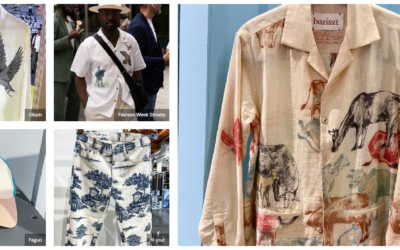
In the dynamic realm of the fashion industry, branding is the cornerstone of success. Your logo is more than a symbol; it’s the visual narrative that encapsulates the spirit of your fashion label.
Gestalt Theory and Logos
Gestalt theory offers keen insights into logo design. Human minds are programmed to look for patterns and completeness when viewing visual elements; this instinctual behavior plays an essential part in logo interpretation.
- Understanding Gestalt theory’s foundational principles in logo design: Attractivity, similarity, and closure all play vital roles when designing logos;
- Our brains instinctively complete logo puzzles by joining dots into meaningful images that form cohesive and meaningful images.
Continuity in Logo Design
Continuity in logo design can be used to engage viewers and shape their attention and cognition. It involves carefully using lines, shapes, and patterns in combination to establish visual flow throughout a logo’s composition – boosting its aesthetics and ensuring memorability and engagement for audiences.
- Consistency in logo design undeniably affects viewer perception: By providing viewers with a logical visual path through a logo, continuity ensures an enjoyable journey for everyone who interacts with it.
- How logos guide viewer attention and create memorable, eye-catching designs, making sure that viewers recall and connect with your brand!
Common Fate in Logos
Gestalt psychology’s concept of common fate explores how perceived motion affects our interpretation of design; when applied to logo design, this principle plays an essential role in crafting dynamic and visually attractive logos.
- Understanding common fate and its effect on logo design: Logos that incorporate elements to suggest motion can capture and keep viewers’ interest for an extended period.
- How Motion in Logos Increases Perception and Engagement: Elements like arrows, swirls, and dynamic shapes add movement and appeal, making logos more visually attractive and captivating for their viewers.
Interactive Logos
Modern branding relies on interactivity. Interactive logos can create an emotional bond with users by responding to user interactions or adapting to various platforms, creating an unforgettable brand experience. This approach can help you identify your clothing line distinctively and engagingly.
- Interactive logos have become an indispensable aspect of modern branding: these adaptive signs react to user behaviors to provide a uniquely engaging brand experience for each consumer.
- User engagement through interactive logos is the cornerstone of successful branding: Interactive logos provide two-way communications channels that enhance brand loyalty while forging connections with audiences.
Depth and Logo Design
Depth in logo design expands beyond two dimensions to create a three-dimensional visual impact – elevating logos into captivating brand identities with visual impact that are easily remembered.
- How the strategic use of depth can add depth and dimension, increasing visual interest: By creating depth through shading and perspective effects, logo designs become visually engaging.
- Implementing 3D logos into brand identity creation provides an eye-catching visual statement that is memorable and distinct to their business. Three-dimensional logos stand out with their 3-dimensional effect and create a 3D effect by manipulating space and perspective. These special three-dimensional logos stand out to make an unforgettable visual impact that makes a unique brand identity statement.
Retrospective, Present, and Forward-Looking Strategies
Gestalt theory’s timeless principles have left an indelible imprint on logo design. They provide the unifying thread between past, present, and future aesthetics of logo aesthetics using Gestalt’s timeless essence as unifiers.
- Gestalt theory’s lasting importance in logo design cannot be overstated: Gestalt principles continue to shape contemporary logo design today and beyond.
- How these principles have guided the progression of logo aesthetics over time, and how these principles continue to guide logo design into the future.
Conclusion
Logos play an essential part in branding success within the fashion industry. By harnessing Logo Gestalt principles, designers can craft logos that capture, engage, and convey all that defines their fashion brand – continuity, common fate, interactivity, and depth design. Therefore, the power of our minds to complete design puzzles is the cornerstone of successful branding in the fashion industry.
As you’re interested in logo, you must be interested in our other articles on:
Content Marketing for Fashion Brands: Engaging Your Audience
Fashion Brand Development: All You Need to Know
Top Digital Marketing Strategies for Fashion E-commerce
M&L Creative, the Number One Choice for Sustainable Brands
Please feel free to reach out to us at fashionnovationfd@gmail.com
We read your emails and publish your best articles.




0 Comments